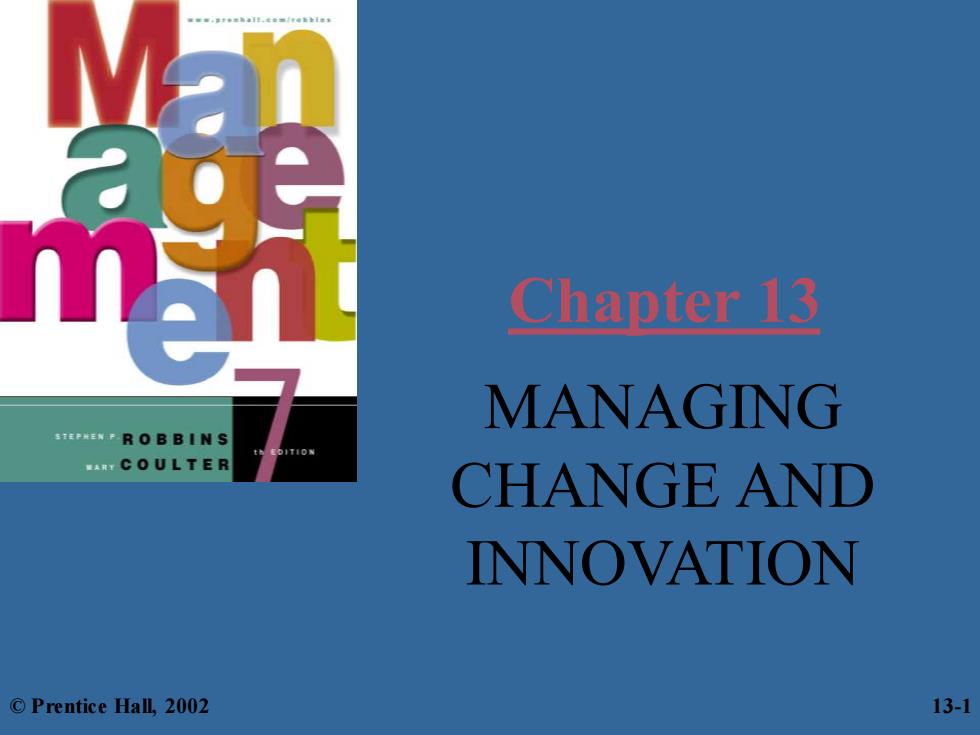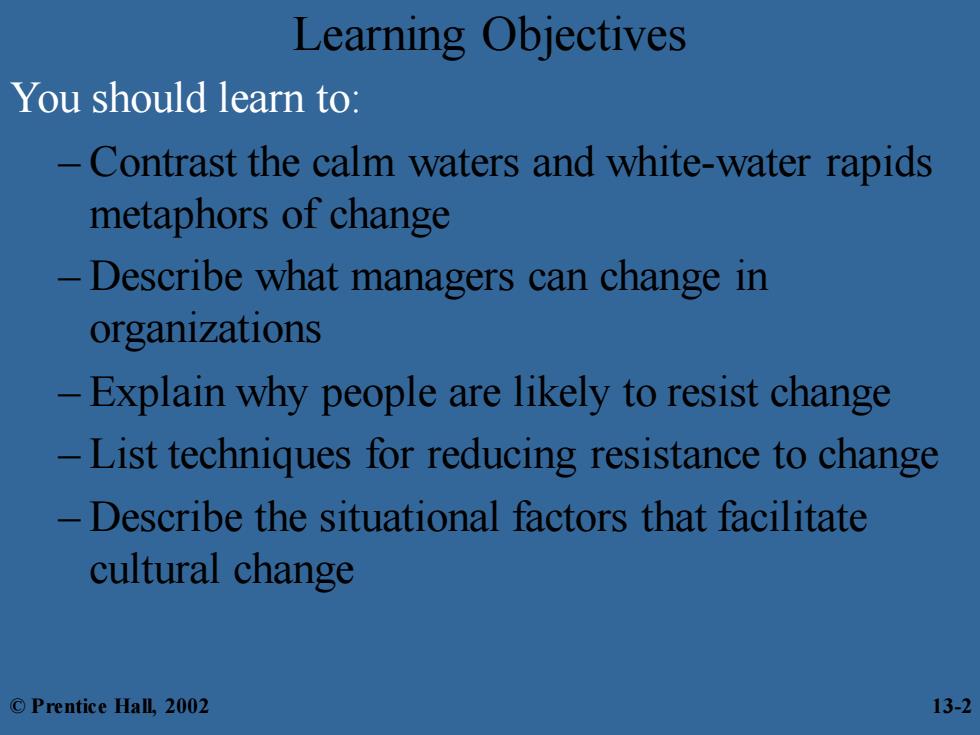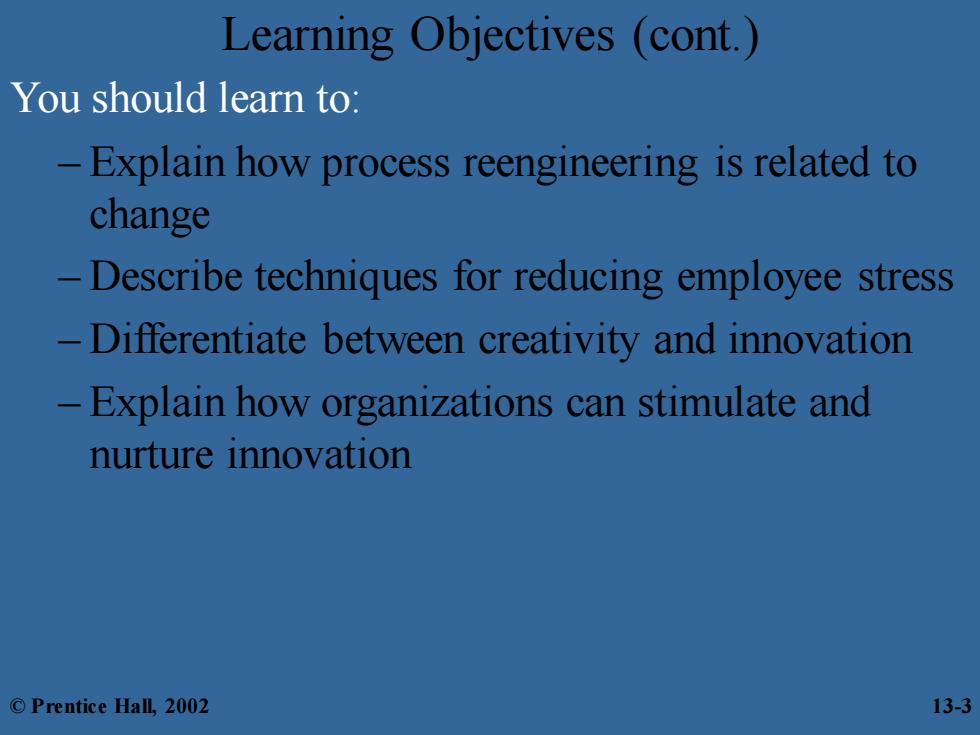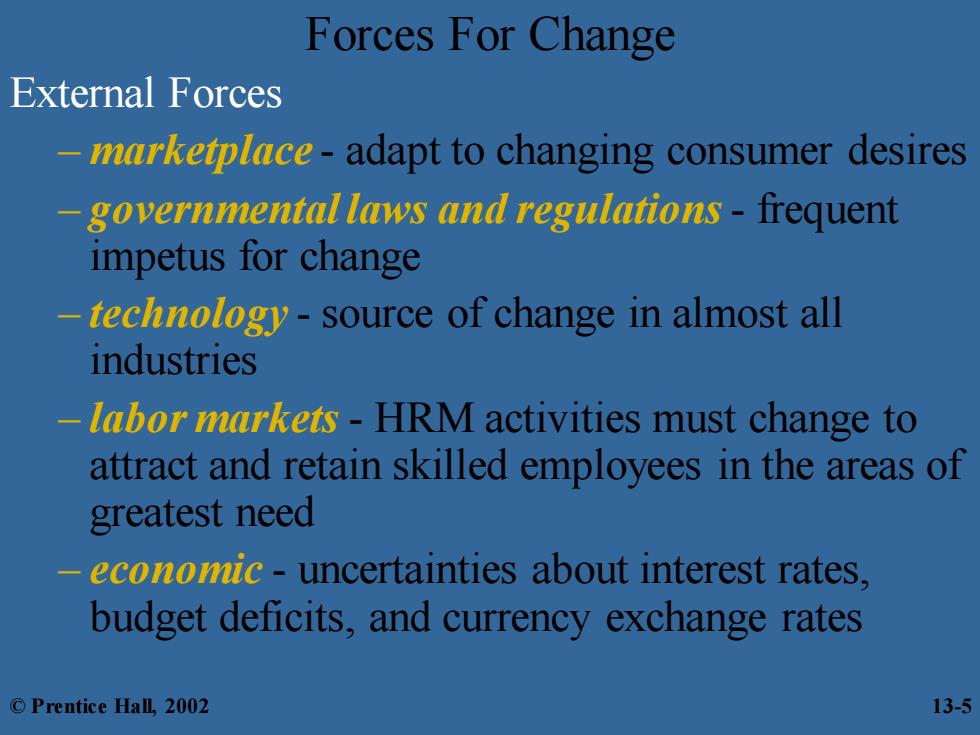
Chapter 13 MANAGING DROB BI NS ACOULTER CHANGE AND INNOVATION ©Prentice Hall,2002 13-1
Chapter 13 MANAGING CHANGE AND INNOVATION © Prentice Hall, 2002 13-1

Learning Objectives You should learn to: -Contrast the calm waters and white-water rapids metaphors of change Describe what managers can change in organizations Explain why people are likely to resist change -List techniques for reducing resistance to change Describe the situational factors that facilitate cultural change ©Prentice Hall,2002 13-2
Learning Objectives You should learn to: – Contrast the calm waters and white-water rapids metaphors of change – Describe what managers can change in organizations – Explain why people are likely to resist change – List techniques for reducing resistance to change – Describe the situational factors that facilitate cultural change © Prentice Hall, 2002 13-2

Learning Objectives (cont.) You should learn to: Explain how process reengineering is related to change Describe techniques for reducing employee stress Differentiate between creativity and innovation Explain how organizations can stimulate and nurture innovation ©Prentice Hall,.2002 13-3
Learning Objectives (cont.) You should learn to: – Explain how process reengineering is related to change – Describe techniques for reducing employee stress – Differentiate between creativity and innovation – Explain how organizations can stimulate and nurture innovation © Prentice Hall, 2002 13-3

What Is Change? Change -alterations in people,structure,or technology change is an organizational reality managing change is an integral part of every manager's job complicates the jobs of managers ©Prentice Hall,2002 13-4
What Is Change? Change – alterations in people, structure, or technology – change is an organizational reality – managing change is an integral part of every manager’s job • complicates the jobs of managers © Prentice Hall, 2002 13-4

Forces For Change External Forces markeiollace-adapt to changing consumer desires governmental laws and regulations-frequent impetus for change -teclanollogy-source of change in almost all industries labor markeis HRM activities must change to attract and retain skilled employees in the areas of greatest need ecomomie-uncertainties about interest rates, budget deficits,and currency exchange rates ©Prentice Hall,2002 13-5
Forces For Change External Forces – marketplace - adapt to changing consumer desires – governmental laws and regulations - frequent impetus for change – technology - source of change in almost all industries – labor markets - HRM activities must change to attract and retain skilled employees in the areas of greatest need – economic - uncertainties about interest rates, budget deficits, and currency exchange rates © Prentice Hall, 2002 13-5